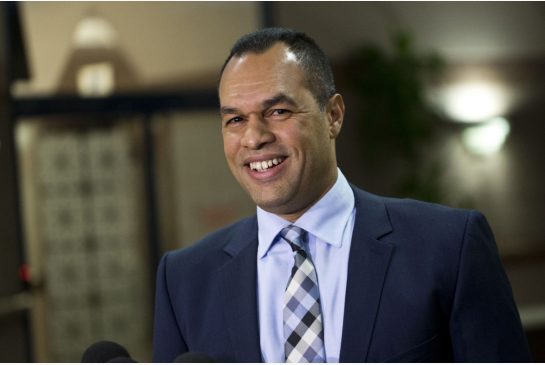by AKWASI OWUSU-BEMPAH AND ALAN BROADBENT
NOVEMBER 7, 2022

Peter Sloly has been made into a convenient scapegoat
Much of the testimony to date at the Public Order Emergency Commission has tried to assign blame for the intelligence, security and policing failures that enabled a convoy to enter and occupy the core of our nation’s capital for a month earlier this year.
Some of the blame has been aimed at the federal government for invoking the Emergencies Act, at the Ontario government for failing to show up, and at individuals tasked with making critical decisions before and during the occupation. It will ultimately be up to the commission to make sense of it all and try to determine whether Ottawa should have invoked the act on Feb. 14.
But one individual most often mentioned by those giving testimony, and assigned much of the blame for the occupation and its longevity, is former Ottawa police chief Peter Sloly. No doubt, he is targeted because he was a key decision maker, and because the Ottawa police are being positioned as the institution that should and could have dealt with the convoy effectively.
Mr. Sloly recently appeared before the commission and refuted many of the accusations directed his way. He addressed reasons for why the occupation was prolonged, why the police service didn’t – and couldn’t – respond more quickly when the convoy arrived, and what the major explanations were for the different police services not co-operating better.
His testimony will not turn all heads. Many of those devoted to the narrative that assigns the bulk of the blame to Mr. Sloly are proving reluctant to change the script. His perspective was useful, though, to help us consider that he has been made a convenient scapegoat, particularly in light of his resignation from the police service when the act was invoked.
It is unrealistic to think that such comprehensive system failures can be laid at the feet of one person. As the inquiry has shown, serious intelligence, policing, political and government shortcomings all contributed to the situations in Ottawa and at our borders. Various agencies responsible for detecting, assembling and appropriately communicating intelligence did not seem to be talking to one another, or informing other actors involved on the ground.
Within the Ottawa Police Service, there was apparent dysfunction in police culture – contestation among and between both management and the rank and file. This was nothing new – shortly after Mr. Sloly had become chief, there was strong pushback from the police union over his attempts to deal with systemic racism. The members of the service resisted a chief from outside with a mandate to reform and rebuild the service. His leadership was unjustly questioned from the outset.
During the convoy period, there was also poor co-ordination between municipal, provincial and federal police services over who was in charge, what services could be provided and what tactics should be employed. There was a clear disinclination to accept or acknowledge each other’s plans to deal with the situation.
There were also political battles at three levels of government, and within each level. Calls were being made behind the scenes, and efforts to co-ordinate action were not embraced by all. The fact that Doug Ford, Premier of Ontario, and Sylvia Jones, former solicitor-general and current Deputy Premier, have thus far declined to testify before the commission provides evidence of the political disfunction that added to existing problems.
In all, a very difficult situation, which was very much bigger than a simple policing operation, became complicated by cascading failures across the system of response. Recognizing that fact and identifying effective remedial action, not punitive action, at each place is the critical task at hand.
Simple scapegoating of an individual decision maker will prevent any useful lessons from being learned.
Akwasi Owusu-Bempah is an associate professor in the Department of Sociology at the University of Toronto and a senior fellow at Massey College. Alan Broadbent is chair and chief executive officer of Avana Capital Corporation.
Source: Globe and Mail
